The NBS Head Office Building was built from 1888 – 1890, on the basis of blueprints designed by Konstantin Jovanovic (Vienna 1849 – Zurich 1923), son to distinguished artist Anastas Jovanovic...
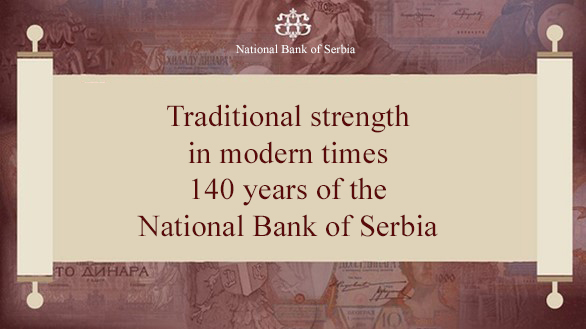
The Law on Minting Silver Coins from 1873 regulated the monetary system of the Principality of Serbia and established the dinar as the basic monetary unit.
The Privileged National Bank of the Kingdom of Serbia was established after the model of the National Bank of Belgium, which provided it with generous assistance. It was set up by domestic private capital as a privileged shareholders’ organisation subject to ongoing government control.
In the course of its long history, the National Bank of Serbia underwent different economic, social and political changes. During World War I, the Bank was evacuated to Marseille where it remained until the end of the war. One of its first activities in Marseille was the exchange of Serbian dinars for French francs. The establishing of the Yugoslav state in 1918 gave rise to new expectations regarding the country’s economic development and progress. The Law on the National Bank was enacted in January 1920, and already on 1 February the National Bank took over operations in the enlarged territory under a new name – the National Bank of the Kingdom of Serbs, Croats and Slovenes.
During World War II, the Bank carried on its operations in exile. On 29 May 1941, the German authorities enacted a Decree on Liquidating the National Bank of the Kingdom of Yugoslavia, to apply to the part of the Bank’s assets which remained in the country. A new Serbian National Bank was established in the occupied Serbia, and it immediately embarked on the exchange of the Yugoslav dinar for the Serbian dinar. A new name, the National Bank of the Federal People’s Republic of Yugoslavia, was introduced on 15 January, and the Bank was nationalised on 25 September 1946.
Following adoption of the Constitution of the Federal Republic of Yugoslavia in 1992, the 1993 Law established the National Bank as the issuing institution of the new state comprising the Republic of Serbia and the Republic of Montenegro.
After enactment of the Law on the National Bank of Serbia in 2003, the National Bank of Yugoslavia continued to operate as the National Bank of Serbia. In addition to the Governor, two new bodies were established – the Monetary Policy Committee and the Council which, following amendments to the Law in 2010, became the Executive Board and the Council of the Governor.
Today, the National Bank of Serbia is a modern central bank with 29 main organisational units and continuously expanding operations. The position, organisation, powers and functions of the National Bank of Serbia are laid down in the Constitution of the Republic of Serbia and the Law on the National Bank of Serbia.
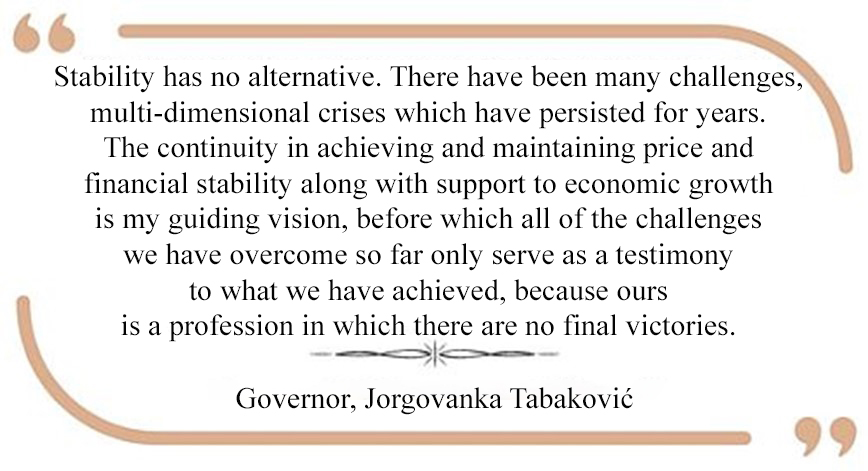
During this anniversary year, we will use the opportunity to highlight the important role which the National Bank of Serbia has played in the past 140 years, linking our history to our present and future.
In the past 140 years, the National Bank of Serbia has had 30 governors. Governor Jorgovanka Tabaković is at the helm of the National Bank of Serbia today, and her term in office is the second longest in more than 140 years of history of this institution. The only Governor with a longer term in office (26 years) was Đorđe Vajfert.
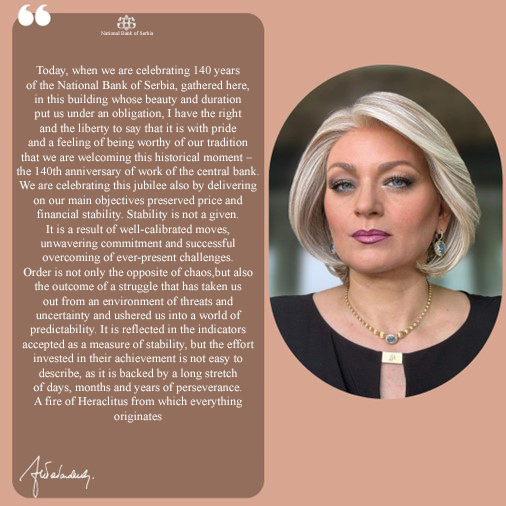
We invite you to take a look at the series of activities and events that we have organised for the wider and professional public and for the media to celebrate this important anniversary.
To celebrate 140 years of the central bank, on Tuesday, 2 July, Serbian President Aleksandar Vučić and NBS Governor Jorgovanka Tabaković opened the innovated Visitor Centre in the NBS building in 12 Kralja Petra St.
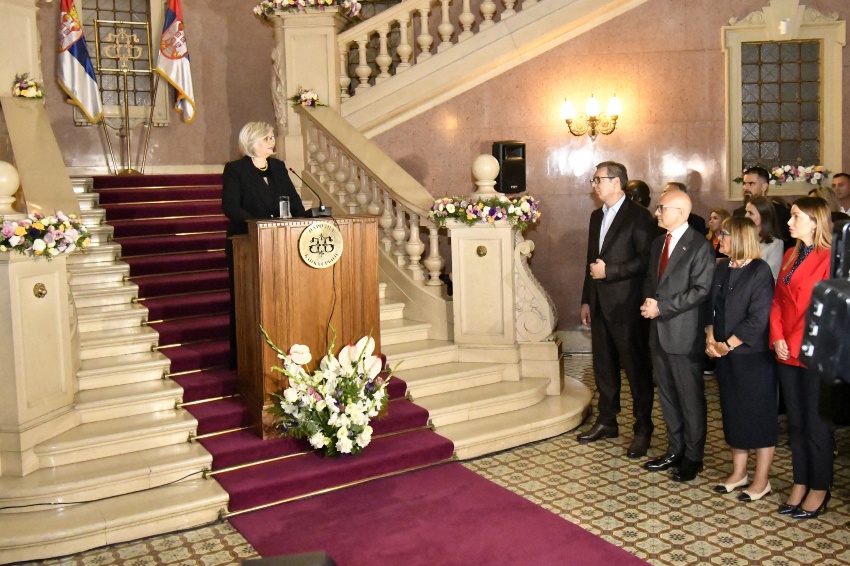
The Visitor Centre contains the Numismatic Collection of the NBS, which traces the history of money in the territory of Serbia.
In addition to the Serbian President, the ceremony to mark 140 years of the NBS was also attended by the Prime Minister, President of the Provincial Government, ministers in the Serbian government and many other public and political figures, as well as by members of the diplomatic corps.
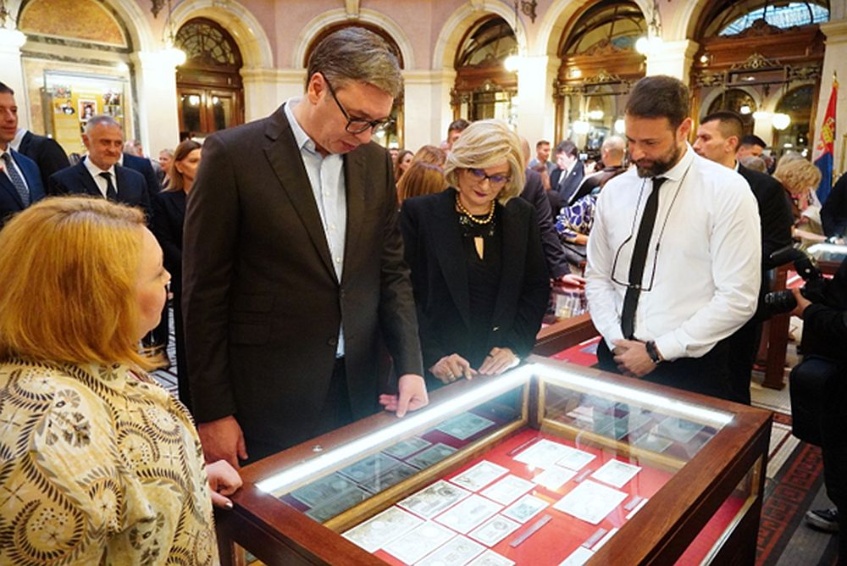
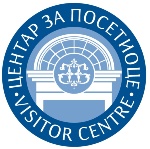 NBS Visitor Centre again open for visits
NBS Visitor Centre again open for visitsIn the NBS building in 12 Kralja Petra St., the public can see the main exhibition: “Money in the Territory of Serbia from Earliest Times to Present Day” and the accompanying theme exhibition: “Coin Minting – from Conceptual Design to the Mint.” The Centre is open each business day from 10 a.m. to 4 p.m.
To celebrate 140 years of the central bank, we have prepared a brochure entitled “140 years of the National Bank of Serbia.” We looked at important events in the National Bank’s history, with the main focus on the twelve years of financial and monetary stability during the term in office of Governor Jorgovanka Tabaković.